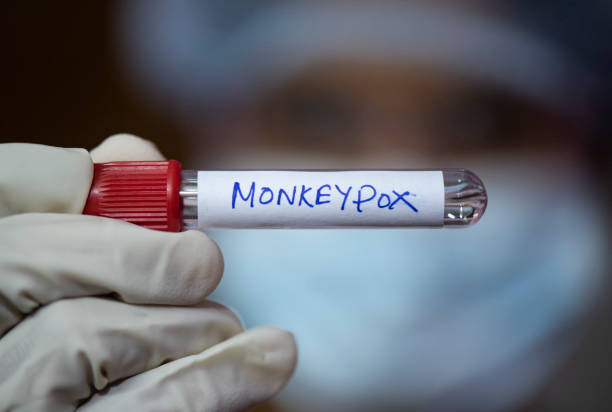LONDON (MBNEWS24) — The World Health Organization (WHO) declared on Wednesday that the escalating spread of mpox in Africa is now a global health emergency, cautioning that the virus could eventually spread across international borders.
WHO Director-General Tedros Adhanom Ghebreyesus made the announcement following a meeting of the U.N. health agency’s emergency committee. The Africa Centers for Disease Control and Prevention (Africa CDC) had already declared mpox a public health emergency on the continent a day earlier, on Tuesday.
According to WHO, there have been over 14,000 cases and 524 deaths in Africa this year, surpassing last year’s numbers.
To date, more than 96% of all cases and deaths have occurred in a single country—Congo. Scientists are alarmed by the emergence of a new variant of the virus in Congo, which may be more easily transmissible among people.
Here’s a closer look at what we know about mpox and the measures that might be taken to contain it:
What is mpox (Monkeypox)?
Mpox, also known as monkeypox, was first identified by scientists in 1958 during outbreaks of a “pox-like” disease in monkeys. Until recently, most human cases were observed in people in central and West Africa who had close contact with infected animals.

In 2022, the virus was confirmed to spread through sexual contact for the first time, triggering outbreaks in over 70 countries that had not previously reported mpox.
Mpox belongs to the same family of viruses as smallpox but typically causes milder symptoms, such as fever, chills, and body aches. In more severe cases, individuals can develop lesions on their face, hands, chest, and genitals.
Why is there concern about the situation in Africa?
The number of cases has surged significantly. Last week, the Africa CDC reported that mpox had been detected in at least 13 African countries. Compared to the same period last year, cases have risen by 160%, and deaths have increased by 19%.
Earlier this year, scientists identified a new form of mpox in a Congolese mining town that can be fatal for up to 10% of those infected and may spread more easily.
Unlike previous mpox outbreaks, where lesions were mainly found on the chest, hands, and feet, this new variant causes milder symptoms and lesions on the genitals, making it harder to detect. This means people might unknowingly infect others.

WHO also reported that mpox has recently been identified for the first time in four East African countries: Burundi, Kenya, Rwanda, and Uganda, with all these outbreaks linked to the epidemic in Congo. Tedros expressed concern about the potential for further spread of the disease within Africa and beyond.
In Ivory Coast and South Africa, health authorities have reported outbreaks of a different, less dangerous version of mpox that spread worldwide in 2022.
ALSO READ : Parvovirus B19 highly contagious warned by CDC on the rise cases of. What is it?
What does the emergency declaration signify?
The WHO’s emergency declaration is intended to prompt donor agencies and countries to take action. However, the global response to previous declarations has been inconsistent.
Africa CDC Director-General Dr. Jean Kaseya stated that the agency’s public health emergency declaration aimed “to mobilize our institutions, our collective will, and our resources to act swiftly and decisively.” He also appealed to Africa’s international partners for assistance, highlighting that the increasing caseload in Africa had largely been ignored.
Michael Marks, a professor of medicine at the London School of Hygiene and Tropical Medicine, remarked, “It’s clear that current control strategies aren’t working, and there is a clear need for more resources. If a global emergency declaration is the mechanism to unlock these things, then it is warranted.”
How does the current outbreak in Africa differ from the 2022 epidemic?
During the global mpox outbreak in 2022, the majority of cases occurred among gay and bisexual men, with the virus mostly spreading through close contact, including sexual activity.
While some similar patterns have been observed in Africa, children under 15 now account for more than 70% of mpox cases and 85% of deaths in Congo.
Ahead of the emergency meeting, Tedros noted that officials were managing several mpox outbreaks in different countries, with “different modes of transmission and different levels of risk.”
“Stopping these outbreaks will require a tailored and comprehensive response,” he stated.
Greg Ramm, Save the Children’s Congo director, expressed particular concern about the spread of mpox in crowded refugee camps in the east, where 345,000 children are “crammed into tents in unsanitary conditions.” He noted that the country’s health system was already “collapsing” under the strain of malnutrition, measles, and cholera.
Dr. Boghuma Titanji, an infectious diseases expert at Emory University, pointed out that it remains unclear why children are disproportionately affected by mpox in Congo. She suggested that it could be due to children’s greater susceptibility to the virus or social factors like overcrowding and exposure to infected parents.
What can be done to stop mpox?
The 2022 mpox outbreak in dozens of countries was largely contained through the use of vaccines and treatments in wealthy nations, alongside efforts to encourage people to avoid risky behaviours. However, vaccines and treatments have been scarce in Africa.
Marks, from the London School of Hygiene and Tropical Medicine, noted that immunization would likely help, including vaccinating people against smallpox, a related virus.
“We need a large supply of vaccine so that we can vaccinate populations most at risk,” he said, emphasizing that this would include sex workers, children, and adults living in outbreak regions.
Congo has stated that it is in discussions with donors regarding potential vaccine donations and has received some financial aid from Britain and the U.S.
WHO has already allocated $1.45 million from its emergency fund to support the response to mpox in Africa but says it needs an initial $15 million to adequately fund that response.




2 thoughts on “ What is Mpox, where are the outbreaks and what is the WHO doing?”